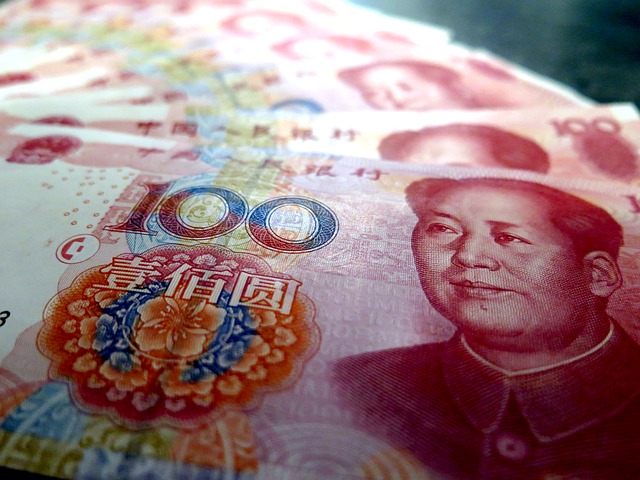China is facing a sharpening dilemma between a perceived need to keep interest rates low to help the economy manage its debt burden, and downward pressure on the Chinese yuan and foreign reserves, says Fitch Ratings. The authorities have reduced interest rates steadily since November 2014 in a bid to help the economy manage its debt burden - which is high and still rising - at a time of slowing growth. However, lower rates are helping to drive capital outflows, weakening the yuan.
The yuan has depreciated by just under 6% versus the US dollar since the authorities began to allow the unit to weaken in mid-August 2015. The 11 December decision by the People's Bank of China (PBOC) to measure the yuan against a broader basket of currencies and not just the US dollar could also contribute to further yuan/US dollar weakness. China's official foreign reserves have fallen by 8.8% (USD321bn) since August as the authorities have sought to blunt the depreciation.
Fitch estimates capital outflows, excluding foreign direct investment, to have totaled USD909bn between 2Q14 and 3Q15, and are likely to have exceeded USD1trn as of end-2015.
The onset of sustained capital outflow from China may be linked with the intensification of the authorities' anti-corruption campaign. However, the pattern of flows may also be connected with the narrowing pick-up in yield on yuan assets versus the dollar, as Chinese rates have fallen while those in the US have begun to rise. The spread on two-year government paper between China and the US has narrowed from 340bp in July-August 2014 to just 150bp in December 2015. This is due mostly due to the cuts in Chinese interest rates, but US two-year rates have also risen by about 50bp over the same period as the Fed embarked on its first interest-rate hike in nine years in December.
Lower domestic rates are targeted partly at helping to deal with the high and rising debt. The officially reported stock of aggregate financing, excluding equity raising, rose to 196% of GDP by end-September 2015, up from 187% at end-2014. The aggregate financing growth rate has slowed over that period to about 12.5% from 18%, though Fitch expects it to pick up again as monetary easing begins to work through the system. The weighted-average whole economy interest rate calculated by the PBOC has come down from 7% to 5.7% since June 2014, which has helped to stabilise growth.
A country cannot simultaneously allow free capital flows and control its exchange rate and domestic interest rates. This is at the core of the policy dilemma China faces between the imperative of keeping rates low for domestic stability against pressures on external stability as exemplified by the exchange rate and reserves data. China still operates capital controls, but the scale of flows suggests that these have become porous.
Chinese equity market volatility presents additional uncertainty, although Fitch does not expect this to have broader systemic ramifications. In particular, consumption has so far proven resilient to bouts of stock-market volatility since 2015. Consumption holding up is central to the agency's expectation that China will avoid a "hard landing", and for growth to slow gradually to 6.3% in 2016 from 6.8% in 2015.



 China's Refining Industry Faces Major Shakeup Amid Challenges
China's Refining Industry Faces Major Shakeup Amid Challenges  U.S. Treasury Yields Expected to Decline Amid Cooling Economic Pressures
U.S. Treasury Yields Expected to Decline Amid Cooling Economic Pressures  U.S. Banks Report Strong Q4 Profits Amid Investment Banking Surge
U.S. Banks Report Strong Q4 Profits Amid Investment Banking Surge  Moldova Criticizes Russia Amid Transdniestria Energy Crisis
Moldova Criticizes Russia Amid Transdniestria Energy Crisis  Gold Prices Slide as Rate Cut Prospects Diminish; Copper Gains on China Stimulus Hopes
Gold Prices Slide as Rate Cut Prospects Diminish; Copper Gains on China Stimulus Hopes  Trump’s "Shock and Awe" Agenda: Executive Orders from Day One
Trump’s "Shock and Awe" Agenda: Executive Orders from Day One  Stock Futures Dip as Investors Await Key Payrolls Data
Stock Futures Dip as Investors Await Key Payrolls Data  U.S. Stocks vs. Bonds: Are Diverging Valuations Signaling a Shift?
U.S. Stocks vs. Bonds: Are Diverging Valuations Signaling a Shift?  US Futures Rise as Investors Eye Earnings, Inflation Data, and Wildfire Impacts
US Futures Rise as Investors Eye Earnings, Inflation Data, and Wildfire Impacts  Moody's Upgrades Argentina's Credit Rating Amid Economic Reforms
Moody's Upgrades Argentina's Credit Rating Amid Economic Reforms  US Gas Market Poised for Supercycle: Bernstein Analysts
US Gas Market Poised for Supercycle: Bernstein Analysts  Oil Prices Dip Slightly Amid Focus on Russian Sanctions and U.S. Inflation Data
Oil Prices Dip Slightly Amid Focus on Russian Sanctions and U.S. Inflation Data  European Stocks Rally on Chinese Growth and Mining Merger Speculation
European Stocks Rally on Chinese Growth and Mining Merger Speculation  Energy Sector Outlook 2025: AI's Role and Market Dynamics
Energy Sector Outlook 2025: AI's Role and Market Dynamics  Urban studies: Doing research when every city is different
Urban studies: Doing research when every city is different  Lithium Market Poised for Recovery Amid Supply Cuts and Rising Demand
Lithium Market Poised for Recovery Amid Supply Cuts and Rising Demand  Goldman Predicts 50% Odds of 10% U.S. Tariff on Copper by Q1 Close
Goldman Predicts 50% Odds of 10% U.S. Tariff on Copper by Q1 Close 




























